
– By Ananya Nivsarkar
– Intern IPPCS’21
– Student, Lady Shri Ram College for Women
“It’s time to become a little braver in Foreign Policy”~ Margot Wallström
It has been 7 years since Sweden adopted its landmark Feminist Foreign Policy, making it the first country in the world to introduce intersectional feminist perspective and gender equality at the centre of its diplomatic agenda. With a mix of nods, frowns, smirks and a whole lot of doubtful stares from the international as well as the diplomatic community within Sweden, the FFP marched ahead with a promising view of the future. It is evident from the decisions made by countries like Canada, France, Spain, Mexico and Luxemburg who resolved to follow in Sweden’s footsteps and introduce a Feminist Foreign Policy in their diplomatic agenda. Taking inspiration from this, various other countries decided to mainstream gender perspectives in their foreign policies and diplomatic agenda. Disappointingly, this entire idea mostly seems to be rooted in the west, only receiving a lukewarm response from the Global South. Mexico is the only country from the Global South to take a strong participation in this agenda. At present, India is in an ideal position to explore possibilities of contributing to this growing global discourse. Given its outward looking approach to gender sensitive foreign policy in the past, its recent presidency of the UNSC and it’s influential position in South Asia, what should be the ideal next step for India in establishing this progressive policy framework.
What is a Feminist Foreign Policy
Even though there is a growing interest in Feminist Foreign Policy in academic and political spheres, there is not as much awareness about the concept outside of it. Knowledge about this among the general public is imperative as the entire policy framework is grounded in implementation and is not solely meant for preaching a theory. The International Centre for Research On Women defined FFP as a concept under which a country “prioritizes gender equality and enshrines the human rights of women and other traditionally marginalized groups, allocates significant resources to achieve that vision and seeks through its implementation to disrupt patriarchal and male-dominated power structures across all of its levers of influence (aid, trade, defence and diplomacy), informed by the voices of feminist activists, groups and movements.”
FFP calls states to reflect on their present foreign policy frameworks and attempt to make a shift from the traditional notions of foreign policy which are non-inclusive and fixated on violence. It encourages the nations to drop the perspective of viewing foreign policy through a lens where military domination and force is paramount. Instead, it promotes an alternative, multidimensional framework which constructs the idea of peace, conflict and security through the lens of the oppressed and vulnerable groups. It attempts to mainstream an intersectional viewpoint, through which the experiences of vulnerable groups are taken into account to better the present system and elevate the marginalised groups, by scrutinising orthodox institutions.
Adopting a policy framework based on FPP would give India an opportunity to broaden its ongoing work of promoting gender equality in the international arena. It attempts to make it much more nuanced, with a wider impact as FPP does not focus on the conventional, binary gender mainstreaming approach but takes in an intersectional viewpoint. A much more comprehensive approach with a long term and stronger impact, can prove to be a win for India whose past records do not reflect a favourable stance on issues related to gender and marginalised groups’ equality. At present, it is essential for countries to show a good track record for the same as research continues to show a strong relation between gender and positive development of a country.
Sweden’s Feminist Foreign Policy
At its base, Sweden recognised 3R’s which are supposed to strengthen gender equality, Rights, Representation and Resources; which in turn stems from the foundational R of Reality, which refers to the reality marginalised groups live in. Sweden continues to remain the only country with the strongest and an unapologetic adoption of the Feminist Foreign Policy framework. Margot Wallström is the woman behind the successful introduction of this global discourse. She was the Foreign Minister of the Swedish government when the FPP was adopted, and she made sure that it was central to not just the diplomatic agenda of Sweden but the national agenda of the elected government as well. This proves that for a successful implementation of FPP at the international level, it is essential for a country to work towards its national agenda with a similar perspective first. Observers have noted that Wallström seems to embrace “smart power”, something that was also reflected in Hillary Clinton’s views regarding women rights. Articulated by Joseph Nye, an American Political Scientist, it means that when a country attempts to solve an issue at the global level, it ends up benefiting the country itself. At this point, we should also note that since the adoption of the FPP, Sweden continues to highlight how necessary this is for the country’s brand, and how it is continuing to show that Sweden is a “champion of gender equality and women’s girl’s rights’ ‘.
India’s Road to a Feminist Foreign Policy.
India’s profile as a developing nation, with a complex policy framework meant to cater to its diverse culture, and strong patriarchal institutions, would benefit hugely in the international arena with the adoption of FPP. India’s track record with gender equality and protection of marginalised groups hasn’t been the best. With a skewed sex ratio, and bottom rankings on every major international survey related to gender equality, India needs much more than verbal statements and half-hearted support for the cause to improve its international relations and present itself as an inclusive nation.
A practical and rational view of the situation would tell us that India can’t directly adopt Feminist Foreign Policy framework by taking inspiration from countries like Sweden or Mexico. Within India’s context, a strategic roadmap needs to be planned out that would eventually lead us to a successful adoption of the FFP. India needs to strengthen its situation regarding gender equality and marginalized communities at home first, before it is ready to take up an international responsibility for the same. An ideal starting point, which would incorporate domestic as well as international concerns, would be a stronger commitment to UNSCR 1325 by adopting WPS (Women, Peace and Security) National Action Plan. This can prove to be a crucial step for India, especially after its recent month-long presidency of the UNSC.
Domestic realities need to be addressed at the earliest. Ambitious and progressive policy recommendations have been made but there exists a gap between its intent and its actual implementation. Conducting strong research regarding problems and policy loopholes in the marginalised communities while simultaneously taking swift steps to ensure involvement of women and various other oppressed communities directly at the decision making table either through unmediated individual participation (Ex: through quotas) or through collaborations with Civil Societies and Interest groups.
India needs to make substantial progress on the domestic front within the purview of the FPP framework, to make sure that it ends up being a sustainable agenda.
References
1. https://foreignpolicy.com/2019/01/30/sweden-feminist-foreignpolicy/
2. https://www.newyorker.com/news/news-desk/swedens-feminist-foreign-minister
3. https://centreforfeministforeignpolicy.org/feminist-foreign-policy
4. https://nordics.info/show/artikel/swedish-feminist-foreign-policy/
5. https://kuberneininitiative.com/wp-content/uploads/2021/08/Understanding-the-FFP_A-View-from-India.pdf
6. https://www.stimson.org/2021/india-must-move-towards-a-feminist-foreign-policy/
7. https://www.e-ir.info/2021/08/06/opinion-a-feminist-foreign-policy-for-india-where-to-turn/
8. https://thediplomat.com/2020/01/a-lukewarm-commitment-india-and-gender-equality-in-security-affairs/
9. https://thewire.in/diplomacy/why-india-should-adopt-a-feminist-foreign-policy-framework
10. https://indianexpress.com/article/opinion/columns/feminist-foreign-policy-world-economic-forum-gender-gap-report-7265109/

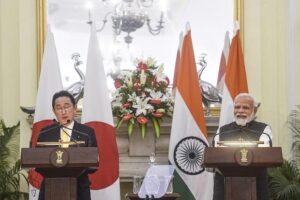



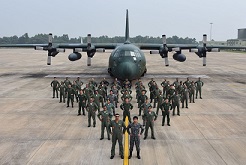



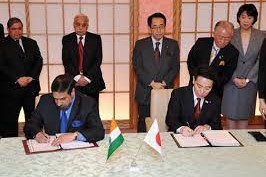

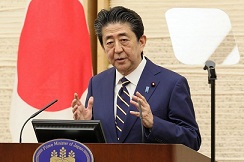
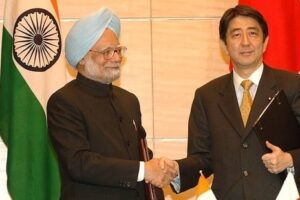

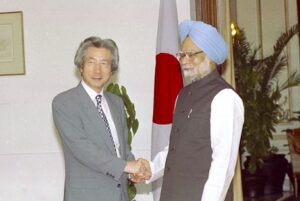
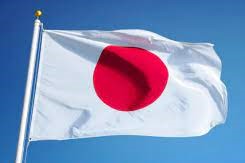
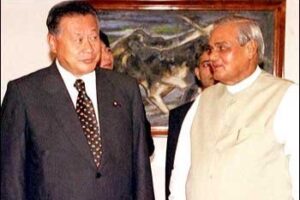





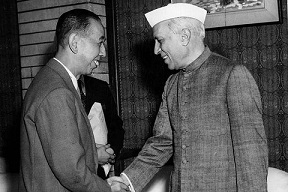



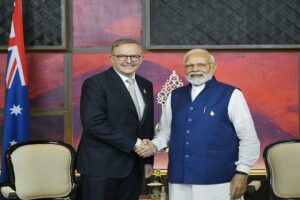



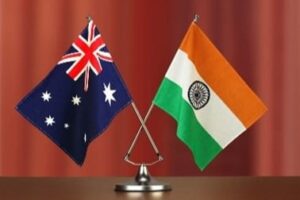
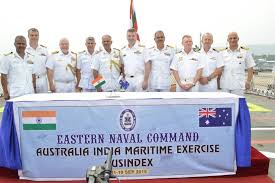

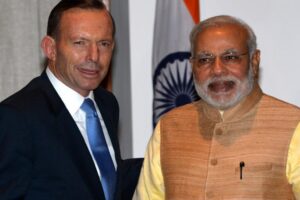





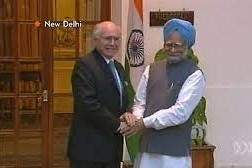
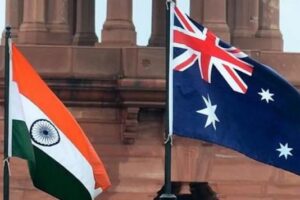
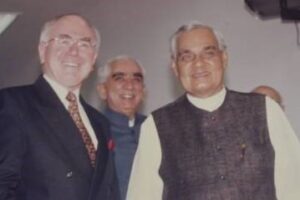

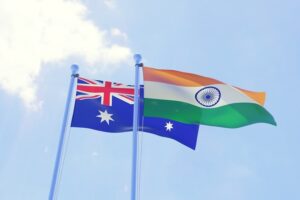

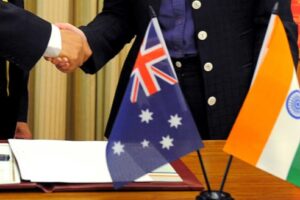

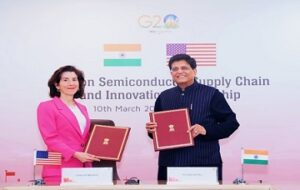
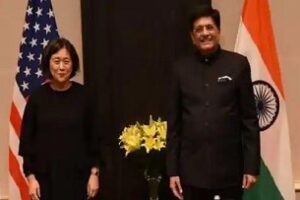
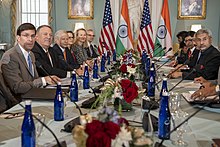

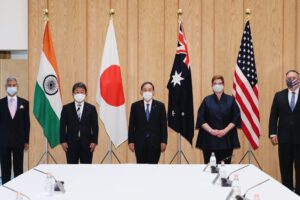

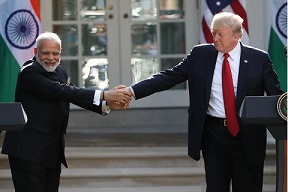
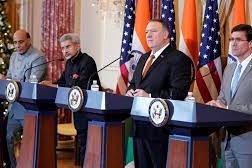

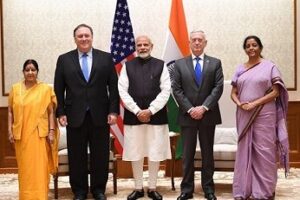
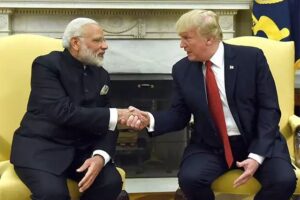
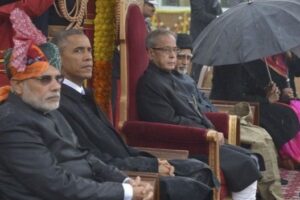

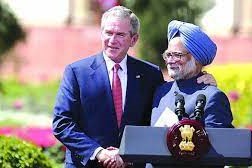
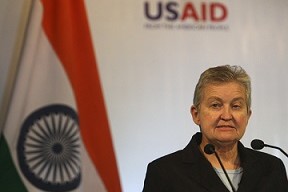
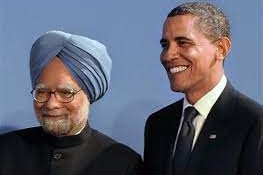
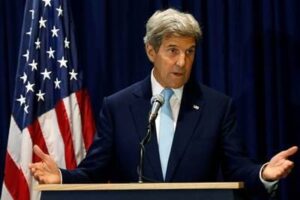

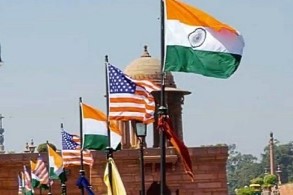
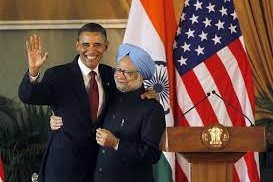
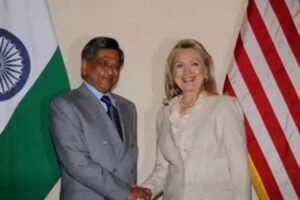
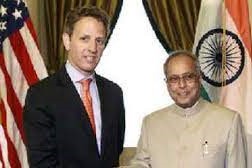
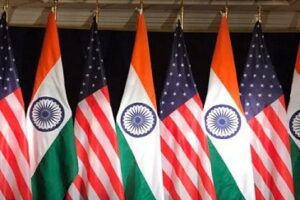
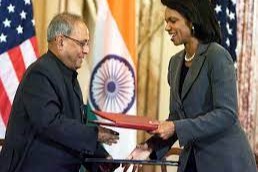

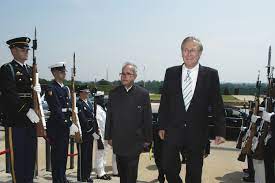




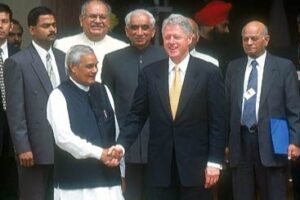
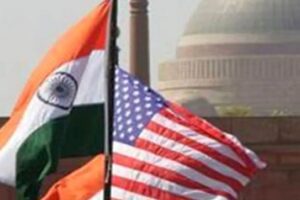

 onducted a total of five underground nuclear tests, breaking a 24-year self-imposed moratorium on nuclear testing. Pakistan followed, claiming 5 tests on May 28, 1998, and an additional test on May 30. The unannounced tests created a global storm of criticism, as well as a serious setback for decades of U.S. nuclear nonproliferation efforts in South Asia. On May 13, 1998, President Clinton imposed economic and military sanctions on India, mandated by Section 102 of the Arms Export Control Act (AECA), and applied the same sanctions to Pakistan on May 30. Some effects of the sanctions on India included: termination of $21 million in FY1998 economic development assistance; postponement of $1.7 billion in lending by the International Financial Institutions (IFI), as supported by the Group of Eight (G-8) leading industrial nations; prohibition on loans or credit from U.S. banks to the government of India; and termination of Foreign Military Sales under the Arms Export Control Act. Humanitarian assistance, food, or other agricultural commodities are excepted from sanctions under the law.
onducted a total of five underground nuclear tests, breaking a 24-year self-imposed moratorium on nuclear testing. Pakistan followed, claiming 5 tests on May 28, 1998, and an additional test on May 30. The unannounced tests created a global storm of criticism, as well as a serious setback for decades of U.S. nuclear nonproliferation efforts in South Asia. On May 13, 1998, President Clinton imposed economic and military sanctions on India, mandated by Section 102 of the Arms Export Control Act (AECA), and applied the same sanctions to Pakistan on May 30. Some effects of the sanctions on India included: termination of $21 million in FY1998 economic development assistance; postponement of $1.7 billion in lending by the International Financial Institutions (IFI), as supported by the Group of Eight (G-8) leading industrial nations; prohibition on loans or credit from U.S. banks to the government of India; and termination of Foreign Military Sales under the Arms Export Control Act. Humanitarian assistance, food, or other agricultural commodities are excepted from sanctions under the law. 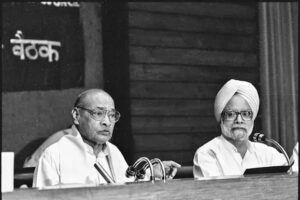
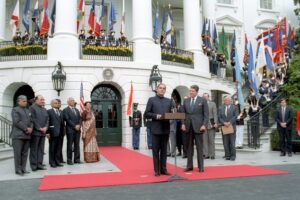
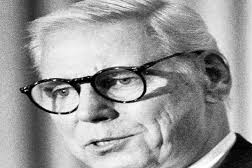


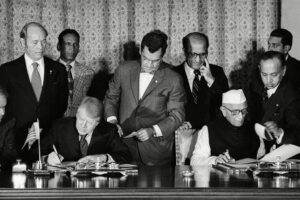
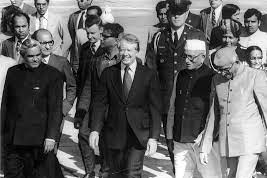

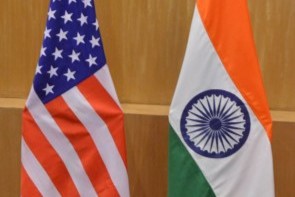

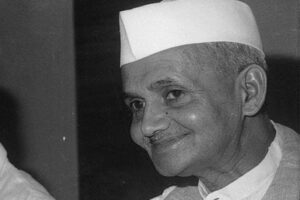

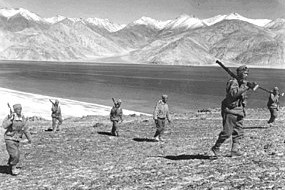

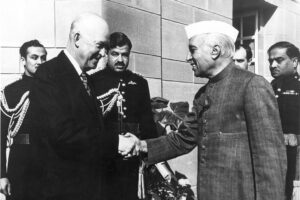

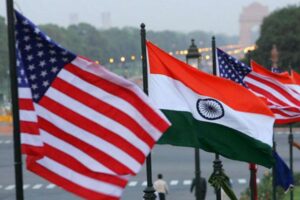
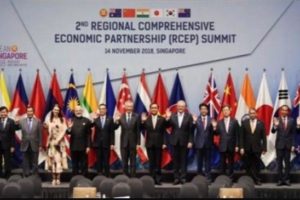 The first ministerial level meeting of QUAD was held on the sidelines of the United Nations General Assembly in New York. Before this, the QUAD had
The first ministerial level meeting of QUAD was held on the sidelines of the United Nations General Assembly in New York. Before this, the QUAD had AusIndEx is an exercise between India and Australia which was first held in 2015.The Australian
AusIndEx is an exercise between India and Australia which was first held in 2015.The Australian 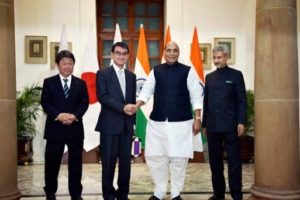



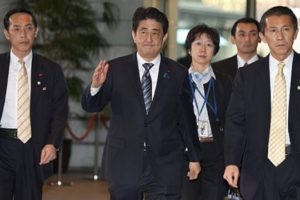



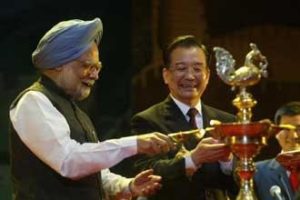 On recommendations of the Japanese government, the four countries met at Manila, Philippines for ASEAN Regional Forum (ARF) originally, but also ended up having a meeting of what we call the first meeting of four nation states on issues of
On recommendations of the Japanese government, the four countries met at Manila, Philippines for ASEAN Regional Forum (ARF) originally, but also ended up having a meeting of what we call the first meeting of four nation states on issues of 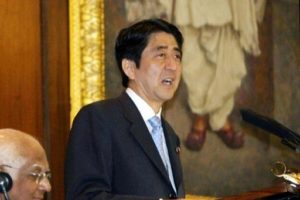 On his official visit to India, Japanese PM Mr. Shinzo Abe reinforced the ties of two nations, i.e., Japan and India with his famous speech about
On his official visit to India, Japanese PM Mr. Shinzo Abe reinforced the ties of two nations, i.e., Japan and India with his famous speech about  In 2007, Japanese President Shinzo Abe resigned from his post citing health reasons. This had a significant impact on QUAD as he was the architect & advocate of QUAD. His successor, Yasuo Fukuda, did not take up QUAD with such zeal leading to dormancy of the forum. (
In 2007, Japanese President Shinzo Abe resigned from his post citing health reasons. This had a significant impact on QUAD as he was the architect & advocate of QUAD. His successor, Yasuo Fukuda, did not take up QUAD with such zeal leading to dormancy of the forum. ( Japan earthquake and tsunami of 2011, also called Great Sendai Earthquake or Great Tōhoku Earthquake, was a 9.0 magnitude earthquake which struck below the floor of the Western Pacific at 2:49 PM. The powerful earthquake affected the northeastern coast of Honshu, Japan’s main island, and also initiated a series of large tsunami waves that devastated coastal areas of Japan, which also led to a major nuclear accident. Japan received aid from India, US, Australia as well as other countries. US Navy aircraft carrier was dispatched to the area and Australia sent search-and-rescue teams.
Japan earthquake and tsunami of 2011, also called Great Sendai Earthquake or Great Tōhoku Earthquake, was a 9.0 magnitude earthquake which struck below the floor of the Western Pacific at 2:49 PM. The powerful earthquake affected the northeastern coast of Honshu, Japan’s main island, and also initiated a series of large tsunami waves that devastated coastal areas of Japan, which also led to a major nuclear accident. Japan received aid from India, US, Australia as well as other countries. US Navy aircraft carrier was dispatched to the area and Australia sent search-and-rescue teams. 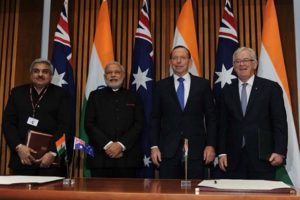 India and Australia signed the
India and Australia signed the  The India-Japan Agreement for Cooperation in the Peaceful Uses of Nuclear Energy was signed on 11 November, 2016 and came into force on 20 July, 2017 which was representative of strengthening ties between India and Japan. Diplomatic notes were exchanged between Dr. S. Jaishankar and H.E. Mr. Kenji Hiramatsu, Ambassador of Japan to India. (
The India-Japan Agreement for Cooperation in the Peaceful Uses of Nuclear Energy was signed on 11 November, 2016 and came into force on 20 July, 2017 which was representative of strengthening ties between India and Japan. Diplomatic notes were exchanged between Dr. S. Jaishankar and H.E. Mr. Kenji Hiramatsu, Ambassador of Japan to India. (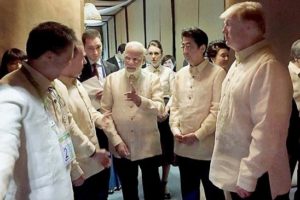 The foreign ministry
The foreign ministry The Officials of QUAD member countries met in Singapore on November 15, 2018 for consultation on regional & global issues of common interest. The main discussion revolved around connectivity, sustainable development, counter-terrorism, maritime and cyber security, with the view to promote peace, stability and prosperity in the
The Officials of QUAD member countries met in Singapore on November 15, 2018 for consultation on regional & global issues of common interest. The main discussion revolved around connectivity, sustainable development, counter-terrorism, maritime and cyber security, with the view to promote peace, stability and prosperity in the  The 23rd edition of trilateral Malabar maritime exercise between India, US and Japan took place on 26 September- 04 October, 2019 off the coast of Japan.
The 23rd edition of trilateral Malabar maritime exercise between India, US and Japan took place on 26 September- 04 October, 2019 off the coast of Japan.  After the first ministerial level meeting of QUAD in September, 2019, the senior officials of US, Japan, India and Australia again met for consultations in Bangkok on the margins of the East Asia Summit. Statements were issued separately by the four countries. Indian Ministry of External Affairs said “In statements issued separately by the four countries, MEA said, “proceeding from the strategic guidance of their Ministers, who met in New York City on the sidelines of the UN General Assembly recently, the officials exchanged views on ongoing and additional practical cooperation in the areas of connectivity and infrastructure development, and security matters, including counterterrorism, cyber and maritime security, with a view to promoting peace, security, stability, prosperity in the Indo-Pacific region.”
After the first ministerial level meeting of QUAD in September, 2019, the senior officials of US, Japan, India and Australia again met for consultations in Bangkok on the margins of the East Asia Summit. Statements were issued separately by the four countries. Indian Ministry of External Affairs said “In statements issued separately by the four countries, MEA said, “proceeding from the strategic guidance of their Ministers, who met in New York City on the sidelines of the UN General Assembly recently, the officials exchanged views on ongoing and additional practical cooperation in the areas of connectivity and infrastructure development, and security matters, including counterterrorism, cyber and maritime security, with a view to promoting peace, security, stability, prosperity in the Indo-Pacific region.” US 2+2 Ministerial Dialogue was held on 18 December, 2019, in Washington DC. Secretary of State Michael R. Pompeo and Secretary of Defense Mark T. Esper will host Indian Minister of External Affairs Dr. S. Jaishankar and Minister of Defense Shri Rajnath Singh. The discussion focussed on deepening bilateral strategic and defense cooperation, exchanging perspectives on global developments, and our shared leadership in the Indo-Pacific region.The two democracies signed the Industrial Security Annex before the 2+2 Dialogue. Assessments of the situation in Afghanistan, Pakistan, Nepal, Sri Lanka, and the Indian Ocean region in general were shared between both countries. (
US 2+2 Ministerial Dialogue was held on 18 December, 2019, in Washington DC. Secretary of State Michael R. Pompeo and Secretary of Defense Mark T. Esper will host Indian Minister of External Affairs Dr. S. Jaishankar and Minister of Defense Shri Rajnath Singh. The discussion focussed on deepening bilateral strategic and defense cooperation, exchanging perspectives on global developments, and our shared leadership in the Indo-Pacific region.The two democracies signed the Industrial Security Annex before the 2+2 Dialogue. Assessments of the situation in Afghanistan, Pakistan, Nepal, Sri Lanka, and the Indian Ocean region in general were shared between both countries. (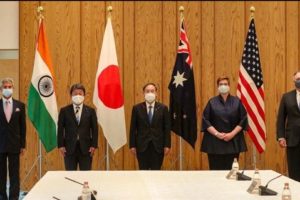 The foreign ministers of QUAD continued their discussions from the last ministerial level meeting in 2019, on 6 October, 2020. While there was no joint statement released, all countries issued individual readouts. As per the issue readout by India, the discussion called for a coordinated response to the challenges including financial problems emanating from the pandemic, best practices to combat Covid-19, increasing the resilience of supply chains, and enhancing access to affordable vaccines, medicines and medical equipment. There was also a focus on maintaining stability in the Indo-Pacific region amidst growing tensions. Australian media release mentions “We emphasised that, especially during a pandemic, it was vital that states work to ease tensions and avoid exacerbating long-standing disputes, work to counter disinformation, and refrain from malicious cyberspace activity. Ministers reiterated that states cannot assert maritime claims that are inconsistent with international law, particularly the United Nations Convention on the Law of the Sea (UNCLOS).”
The foreign ministers of QUAD continued their discussions from the last ministerial level meeting in 2019, on 6 October, 2020. While there was no joint statement released, all countries issued individual readouts. As per the issue readout by India, the discussion called for a coordinated response to the challenges including financial problems emanating from the pandemic, best practices to combat Covid-19, increasing the resilience of supply chains, and enhancing access to affordable vaccines, medicines and medical equipment. There was also a focus on maintaining stability in the Indo-Pacific region amidst growing tensions. Australian media release mentions “We emphasised that, especially during a pandemic, it was vital that states work to ease tensions and avoid exacerbating long-standing disputes, work to counter disinformation, and refrain from malicious cyberspace activity. Ministers reiterated that states cannot assert maritime claims that are inconsistent with international law, particularly the United Nations Convention on the Law of the Sea (UNCLOS).”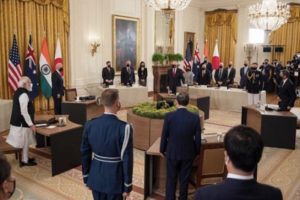 On September 24, President Biden hosted Prime Minister Scott Morrison of Australia, Prime Minister Narendra Modi of India, and Prime Minister Yoshihide Suga of Japan at the White House for the first-ever in-person Leaders’ Summit of the QUAD. The leaders released a Joint Statement which summarised their dialogue and future course of action. The regional security of the Indo-Pacific and strong confidence in the ASEAN remained on the focus along with response to the Pandemic.
On September 24, President Biden hosted Prime Minister Scott Morrison of Australia, Prime Minister Narendra Modi of India, and Prime Minister Yoshihide Suga of Japan at the White House for the first-ever in-person Leaders’ Summit of the QUAD. The leaders released a Joint Statement which summarised their dialogue and future course of action. The regional security of the Indo-Pacific and strong confidence in the ASEAN remained on the focus along with response to the Pandemic. 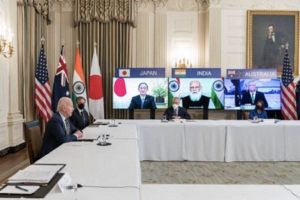 The QUAD Vaccine Partnership was announced at the first QUAD Summit on 12 March 2021 where QUAD countries agreed to deliver 1.2 billion vaccine doses globally. The aim was to expand and finance vaccine manufacturing and equipping the Indo-Pacific to build resilience against Covid-19. The launch of a senior-level QUAD Vaccine Experts Group, comprised of top scientists and officials from all QUAD member governments was also spearheaded.
The QUAD Vaccine Partnership was announced at the first QUAD Summit on 12 March 2021 where QUAD countries agreed to deliver 1.2 billion vaccine doses globally. The aim was to expand and finance vaccine manufacturing and equipping the Indo-Pacific to build resilience against Covid-19. The launch of a senior-level QUAD Vaccine Experts Group, comprised of top scientists and officials from all QUAD member governments was also spearheaded.  Although the Tsunami Core group had to be disbanded on fulfilment of its purpose, however the quadrilateral template that formed remained intact as a successful scaffolding of four countries, as stated by authors Patrick Gerard Buchan and Benjamin Rimland in their diplomatic brief about QUAD ( you can access the brief at
Although the Tsunami Core group had to be disbanded on fulfilment of its purpose, however the quadrilateral template that formed remained intact as a successful scaffolding of four countries, as stated by authors Patrick Gerard Buchan and Benjamin Rimland in their diplomatic brief about QUAD ( you can access the brief at 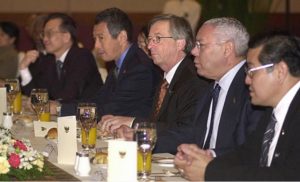 Secretary of State Colin Powell stated that the Core Tsunami Group was to be disbanded and folded and clubbed with the broader United Nations led Relief Operations. In a Tsunami Relief Conference in Jakarta, Secretary Powell stated that
Secretary of State Colin Powell stated that the Core Tsunami Group was to be disbanded and folded and clubbed with the broader United Nations led Relief Operations. In a Tsunami Relief Conference in Jakarta, Secretary Powell stated that 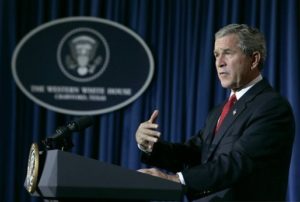 Soon after the Earthquake and Tsunami crisis, humanitarian reliefs by countries, viz., US, India, Japan, and Australia started to help the 13 havoc-stricken countries. The US initially promised $ 35 Millions in aid. However, on 29
Soon after the Earthquake and Tsunami crisis, humanitarian reliefs by countries, viz., US, India, Japan, and Australia started to help the 13 havoc-stricken countries. The US initially promised $ 35 Millions in aid. However, on 29 At 7:59AM local time, an earthquake of 9.1 magnitude (undersea) hit the coast of Sumatra, an Indonesian island. As a result of the same, massive waves of Tsunami triggered by the earthquake wreaked havoc for 7 hours across the Indian Ocean and to the coastal areas as far away as East Africa. The infamous Tsunami killed around 225,000 people, with people reporting the height of waves to be as high as 9 metres, i.e., 30 feet. Indonesia, Srilanka, India, Maldives, Thailand sustained horrendously massive damage, with the death toll exceeding 200,000 in Northern Sumatra’s Ache province alone. A great many people, i.e., around tens of thousands were found dead or missing in Srilanka and India, mostly from Andaman and Nicobar Islands of Indian territory. Maldives, being a low-lying country, also reported casualties in hundreds and more, with several non-Asian tourists reported dead or missing who were vacationing. Lack of food, water, medicines burgeoned the numbers of casualties, with the relief workers finding it difficult to reach the remotest areas where roads were destroyed or civil war raged. Long-term environmental damage ensued too, as both natural and man-made resources got demolished and diminished.
At 7:59AM local time, an earthquake of 9.1 magnitude (undersea) hit the coast of Sumatra, an Indonesian island. As a result of the same, massive waves of Tsunami triggered by the earthquake wreaked havoc for 7 hours across the Indian Ocean and to the coastal areas as far away as East Africa. The infamous Tsunami killed around 225,000 people, with people reporting the height of waves to be as high as 9 metres, i.e., 30 feet. Indonesia, Srilanka, India, Maldives, Thailand sustained horrendously massive damage, with the death toll exceeding 200,000 in Northern Sumatra’s Ache province alone. A great many people, i.e., around tens of thousands were found dead or missing in Srilanka and India, mostly from Andaman and Nicobar Islands of Indian territory. Maldives, being a low-lying country, also reported casualties in hundreds and more, with several non-Asian tourists reported dead or missing who were vacationing. Lack of food, water, medicines burgeoned the numbers of casualties, with the relief workers finding it difficult to reach the remotest areas where roads were destroyed or civil war raged. Long-term environmental damage ensued too, as both natural and man-made resources got demolished and diminished.
No responses yet